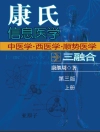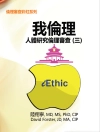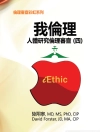Every speck of dust, drop of water, and grain of soil and each part of every plant and animal contain their own worlds of microbes.
Designed as a key text for upper-level undergraduates majoring in microbiology, genetics, or biology, Principles of Microbial Diversity provides a solid curriculum for students to explore the enormous range of biological diversity in the microbial world. Within these richly illustrated pages, author and professor James W. Brown provides a practical guide to microbial diversity from a phylogenetic perspective in which students learn to construct and interpret evolutionary trees from DNA sequences. He then offers a survey of the ‘tree of life’ that establishes the necessary basic knowledge about the microbial world. Finally, the author draws the student’s attention to the universe of microbial diversity with focused studies of the contributions that specific organisms make to the ecosystem.
Principles of Microbial Diversity fills an empty niche in microbiology textbooks by providing an engaging, cutting-edge view of the ‘microbial zoo’ that exists around us, covering bacteria, archaea, eukaryotes, and viruses.
Cuprins
Acknowledgments
Preface
About the Author
Section I Introduction to Microbial Diversity
1. What Is Microbial Diversity?
2. Context and Historical Baggage
3. Phylogenetic Information
4. Constructing a Phylogenetic Tree
5. Tree Construction Complexities
6. Alternatives to Small-Subunit r RNA Analysis
7. The Tree of Life
Section II The Microbial Zoo
8. Primitive Thermophilic Bacteria
9. Green Phototrophic Bacteria
10. Proteobacteria
11. Gram-Positive Bacteria
12. Spirochetes and Bacteroids
13. Deinococci, Chlamydiae, and Planctomycetes
14. Bacterial Phyla with Few or No Cultivated Species
15. Archaea
16. Eukaryotes
17. Viruses and Prions
Section III Microbial Populations
18. Identification of Uncultivated Organisms
19. Sequence-Based Microbial Surveys
20. Fluorescent In Situ Hybridization Surveys
21. Molecular Fingerprinting of Microbial Populations
22. Linking Phenotype and Phylotype
Section IV Conclusion: The Phylogenetic Perspective
23. Genomics, Comparative Genomics, and Metagenomics
24. Origins and Early Evolution
Index
Despre autor
James (Jim) W. Brown’s lasting interest in microbiology was sparked by a single lecture on microbial diversity in an undergraduate microbiology class at Ball State University and by the announcement in that class of the discovery of an entirely new kind of living thing, the ‘archaebacteria.’ He went on to earn his MS in Microbiology at Miami University and his Ph D in the Molecular, Cellular, and Developmental Biology program at The Ohio State University. Jim developed and continues to teach senior-level undergraduate lecture and lab courses in microbial diversity at North Carolina State University (NCSU), which are the genesis of this textbook. He was awarded the NCSU Alumni Association Distinguished Undergraduate Professor award in 2014.












